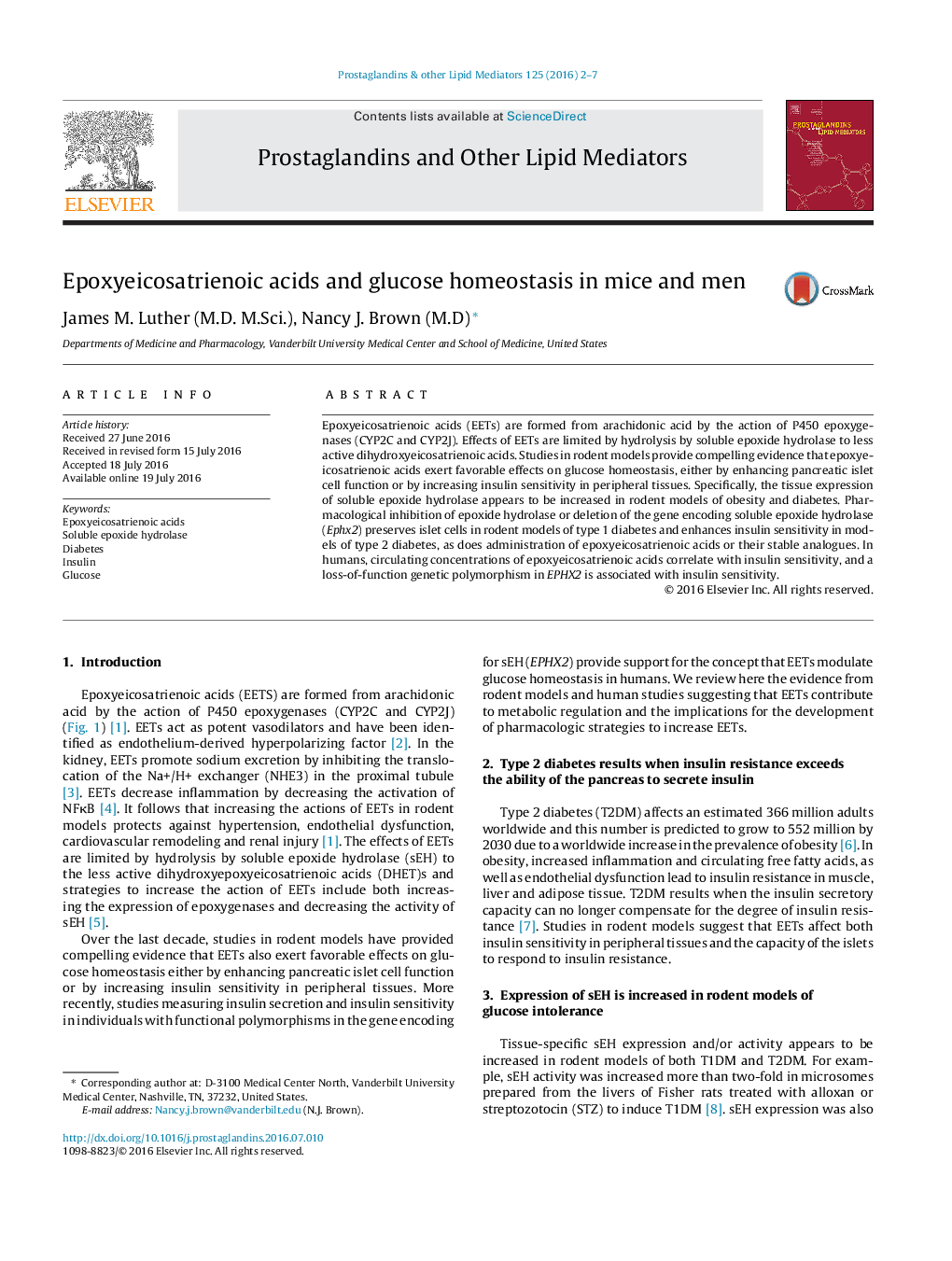| Article ID | Journal | Published Year | Pages | File Type |
|---|---|---|---|---|
| 5515938 | Prostaglandins & Other Lipid Mediators | 2016 | 6 Pages |
â¢Genetic deletion of Ephx2 or inhibition of soluble epoxide hydrolase prevents islet apoptosis in streptozotocin-treated rodents.â¢Deletion of Ephx2 or inhibition of soluble epoxide hydrolase enhances insulin signaling in rodents with insulin resistance.â¢Circulating epoxyeicosatrienoic acids are decreased in obese humans and correlate with insulin sensitivity.â¢Inhibitors of soluble epoxide hydrolase are under clinical development.
Epoxyeicosatrienoic acids (EETs) are formed from arachidonic acid by the action of P450 epoxygenases (CYP2C and CYP2J). Effects of EETs are limited by hydrolysis by soluble epoxide hydrolase to less active dihydroxyeicosatrienoic acids. Studies in rodent models provide compelling evidence that epoxyeicosatrienoic acids exert favorable effects on glucose homeostasis, either by enhancing pancreatic islet cell function or by increasing insulin sensitivity in peripheral tissues. Specifically, the tissue expression of soluble epoxide hydrolase appears to be increased in rodent models of obesity and diabetes. Pharmacological inhibition of epoxide hydrolase or deletion of the gene encoding soluble epoxide hydrolase (Ephx2) preserves islet cells in rodent models of type 1 diabetes and enhances insulin sensitivity in models of type 2 diabetes, as does administration of epoxyeicosatrienoic acids or their stable analogues. In humans, circulating concentrations of epoxyeicosatrienoic acids correlate with insulin sensitivity, and a loss-of-function genetic polymorphism in EPHX2 is associated with insulin sensitivity.
